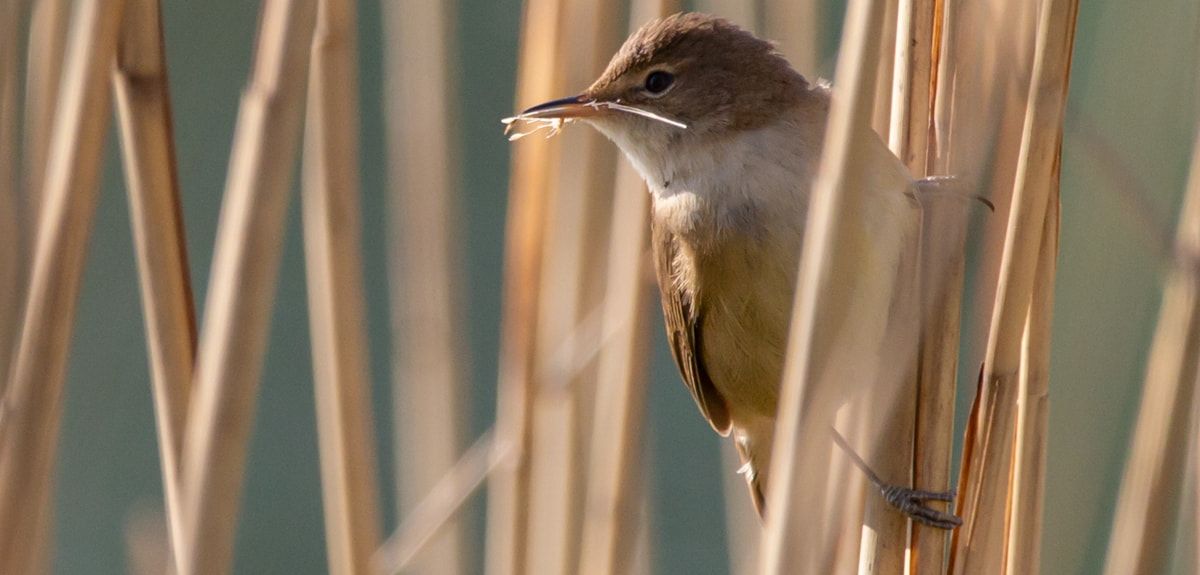
Credit: TheOtherKev
Reed warblers migrating from Africa use the Earth's magnetic field to find their nests
Data collected from more than 17,500 birds revealed that migrating warblers can return to a local nesting site from thousands of miles away using a single geomagnetic coordinate.
A research team led by members of Oxford University’s Department of Zoology has found evidence that migratory birds, like the reed warbler, can use sensory cues from the Earth’s magnetic field to help them return to the same nesting site year after year.
To establish whether migrating songbirds also used magnetic cues as a destination pin to re-locate nesting sites, the study published today in Science analysed ‘ringing recoveries’ from more than 17,500 reed warblers collected over eight decades.
Ringing data logs the location of the bird when the leg ring is fitted and again when the bird is recovered – building a record of any changes to the birds’ nesting positions from one year to the next.
The research team found that as the Earth’s magnetic field moved year on year, the logged locations of the returning warblers moved correspondingly, suggesting a geomagnetic influence.
Previous studies have shown that migratory birds inherit ‘clock and compass’ information from their parents, and that experienced birds can use the Earth’s magnetic field as a navigation aid. However, little was known about how migrating birds know precisely when and where their journey should end.
Dr Joe Wynn, formerly of the University of Oxford and now a researcher at the Institute for Avian Research in Germany, said:
‘While we know an increasing amount about how birds inherit migratory information from their parents, how they return to the same site year-on-year with pinpoint accuracy has remained elusive. It’s quite exciting, therefore, that we’ve been able to find evidence that magnetic cues could be used by songbirds trying to re-locate their homes.’
Although the warblers seemed to be using geomagnetic markers to navigate, it was still unclear which magnetic cues were used by warblers to pinpoint their breeding sites over large distances.
Using the starting position from the ring data and overlaying variations in the earth’s magnetic values, researchers estimated where the bird should return to the following year, depending on which cues the warblers responded to. The study used three models of navigation based on different magnetic cues mapping the predicted recovery sites against the logged ringing recovery sites.
The researchers reported evidence that the warblers used a single magnetic cue – magnetic inclination (the ‘dip angle’ of the earth's magnetic field) – to find their natal or breeding sites by using it as a stop sign.
Dr Wynn said:
'Birds seem to have a direction that they are inclined to go in at a specific time of year and they go in that direction. When they reach a value that represents the magnetic value they are aiming for, then they stop.
'It's remarkable that birds can do this to precisely pinpoint a breeding site from half the world away.'
The full paper, 'Magnetic stop signs signal a European songbird’s arrival at the breeding site after migration' is published in Science.
 Cambridge victorious in Women's and Men's Boat Races 2025
Cambridge victorious in Women's and Men's Boat Races 2025
 Expert Comment: Ethical and legal challenges of uterus transplants in Mexico
Expert Comment: Ethical and legal challenges of uterus transplants in Mexico
 Oxford Humanities team delivers framework for tackling modern slavery and human trafficking
Oxford Humanities team delivers framework for tackling modern slavery and human trafficking